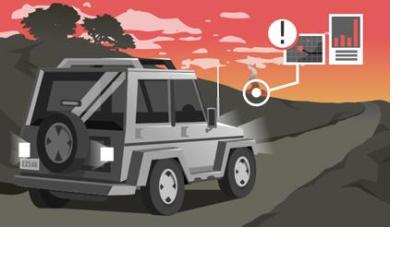Crisis mapping has emerged in the last five years as a dynamic and open way to visualize and report on crisis and disasters. With increasing internet connectivity, mobile phone use, and user-generated content, 'crowdsourcing' is gaining traction by taking advantage of information communication technology (ICT) that allows communities and networks to answer some of the world’s most pressing issues. Held for the first-time ever in Europe, the 3rd International Conference on Crisis Mapping (ICCM) was one example of how new technologies and growing networks of tech-savvy individuals and organizations can help to prevent, prepare for and respond to disasters.
“ICT tools, such as those used by Crisis Mappers, help us understand what is happening on the ground and who’s affected following a disaster. The tools combined with user-generated content also provide an insight into vulnerabilities and risks that a community faces pre-disaster,” says Margareta Wahlström, the UN’s disaster risk reduction chief. “Given our ability as a society to generate, manage, and distribute information, the potential for understanding disaster risks from a global to local level is encouraging. In particular, how crowdsourcing can be used for early warning, risk identification, and as a disaster risk management tool.”
One of the main ingredients to understanding disasters and taking preventative measures or responding quickly and effectively is accounting for disaster losses and managing data and information, whether crowdsourced or centrally managed. Speaking at a pre-ICCM2011 event on Geographic Information Systems (GIS), Ryan Lanclos, Manager of Esri’s Emergency Management & Disaster Response Industry said: “GIS-based hazard and risk analysis should be fundamental to an organization’s daily work. It helps us understand our vulnerabilities and prioritize where to focus mitigation efforts to reduce the impact of future disasters.” “The key to this insight is data – we have to continually collect, manage and update our organizational data to feed our analysis. When we do this well and collaborate appropriately with partners who can complete our data puzzle, this pre-disaster analysis not only helps us prepare but also to respond effectively following a disaster.”
Initiatives such as Ushahidi, ArcGIS.com, Sahana, Google Crisis Response, as well as the UN Secretary-General’s innovative Global Pulse project provides outlets for individuals and organizations to engage with each other to capture real-time issues and risks – ultimately to save lives and strengthen resilience to shocks and disasters. In his keynote address for ICCM2011, Sanjana Huttotuwa, Special Advisor to ICT4Peace Foundation, emphasized that technology is “democratizing analysis” by allowing people to communicate what they see and hear on the ground that can have an impact pre- and post-disaster. He says that the trend cannot be ignored as it is a defining moment in our lifetime.
In a blog post following ICCM2011, Sanjana writes: “mainstream media coverage in the past couple of years clearly flags that aside from the [Sri Lanka] war, widespread flooding, landslides, erosion and drought have cost hundreds of lives, devastated livelihoods and laid waste large tracts of land.” “Technology isn’t going to stop any of this in the near future, but giving citizens the power to alert, advise and action risk reduction strategies, at a community level, leveraging the power and reach of mobiles phones and the Internet, can save lives that through centralized and opaque planning and relief plans are often lost.”
The ICCM2011 conference was organized from 14-15 November by the ICT4Peace Foundation and the European Commission’s Joint Research Centre, and the Swiss Confederation, in collaboration with the International Network of Crisis Mappers – a thriving network of 3,000 individuals representing over 1,500 organizations in 140 countries around the world.

